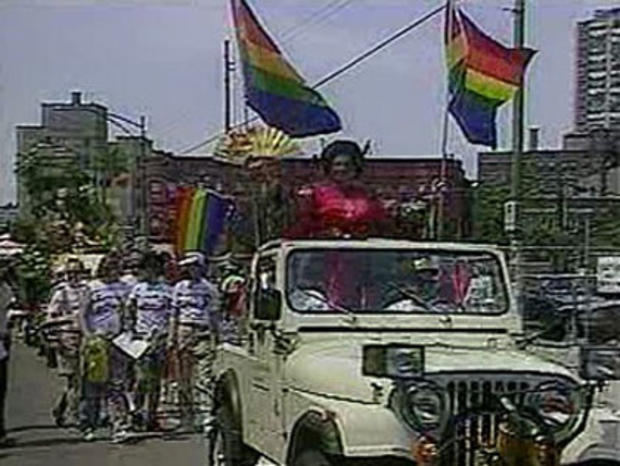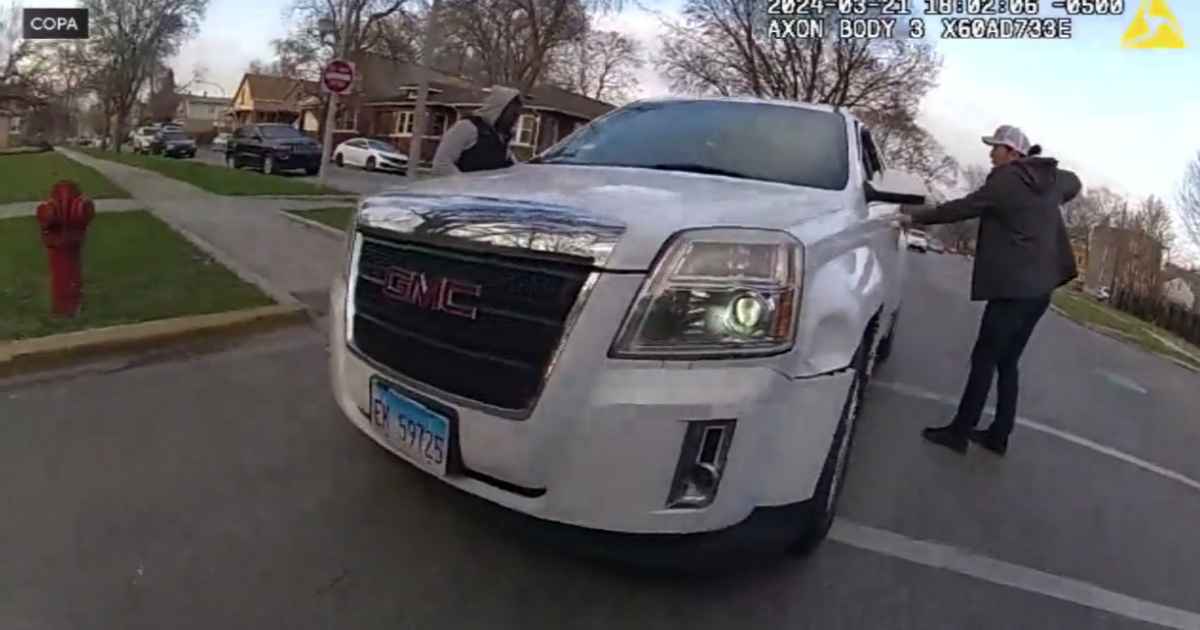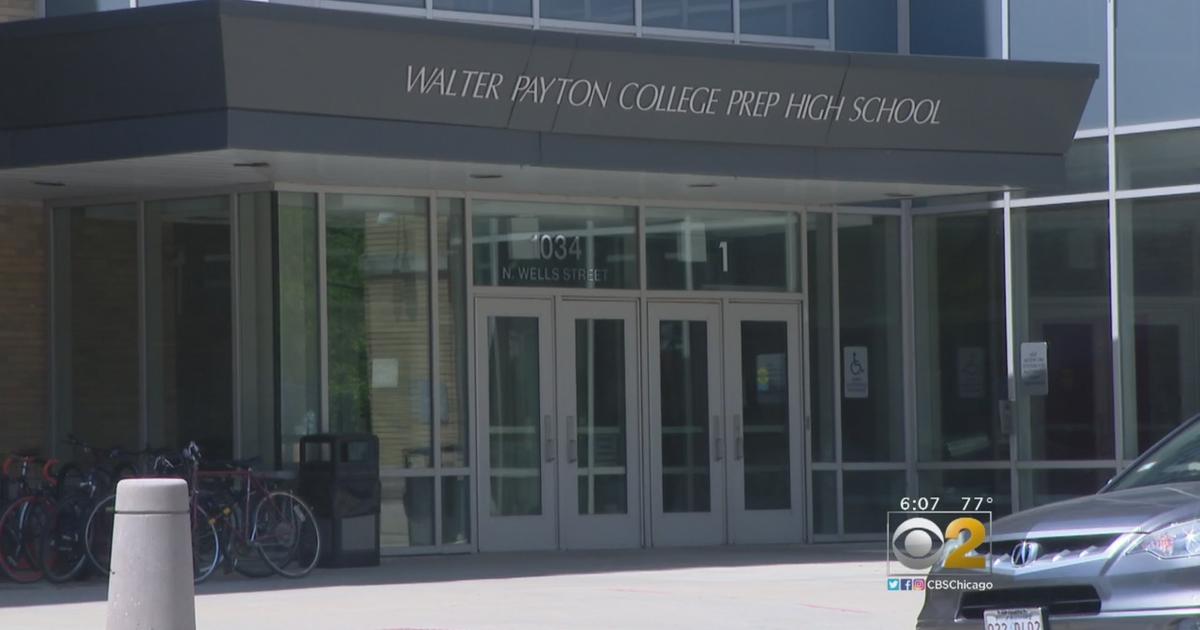The Gay Rights Movement In Illinois: A History
UPDATED 06/01/11 5:58 a.m.
CHICAGO (CBS) - The legalization of civil unions is one in a long string of achievements for the gay rights movement in Illinois, going back nearly 90 years.
The first ever gay rights organization in the country was founded in Illinois, and the state was also the first to decriminalize sodomy. But laws prohibiting discrimination based on sexual orientation proved to be a more difficult battle.
Early Milestones
In 1924, German immigrant Henry Gerber founded the Society for Human Rights, which served a goal to teach others about the gay community and attempting to change laws that made homosexuality illegal.
The organization only lasted a short time before authorities shut it down, but gay and lesbian Chicagoans were visible in the 1920s and enjoyed acceptance among the artists, poets and bohemians of Towertown, an area of the Near North Side just west of the Magnificent Mile. Lectures and discussions on homosexuality were found on the agenda in salons and speakeasies, and female impersonator shows were popular, the Encyclopedia of Chicago tells us.
Around the same time on the Near South Side, a substantial African-American gay and lesbian community also formed, frequenting the cabarets in Bronzeville, according to the encyclopedia.
By the second half of the 20th century, gay communities were established on the Near North Side, Old Town, Hyde Park, and a part of the Lakeview neighborhood centered at Clark Street, Diversey Parkway and Broadway known as New Town.
In 1961, Illinois became the first state to decriminalize sodomy and behavior by "consenting adults in private." By comparison, California did not repeal its anti-sodomy laws until 1976, and New York didn't follow suit until its state Supreme Court rendered its state Supreme Court rendered its sodomy laws unconstitutional in 1980.
But it would be many years until there was anything in Chicago resembling modern-day North Halsted Street with its rainbow pylons. And as late as the 1960s, being openly gay in Chicago brought challenges hard to imagine today.
As the gay and lesbian population grew in number, so did the frequency of police raids on gay bars, which resulted in arrests for being "inmates of disorderly houses," or breaking a law against cross-dressing, according to the Encyclopedia of Chicago. Newspapers would publish the names of everyone arrested in the raids, and political activists were motivated to campaign for change.
The Mattachine Midwest Society was one such organization, which helped with the defense of those arrested in the raids and set up a 24-hour hotline for gays and lesbians, according to the encyclopedia. They also attempted to meet with police to discuss the raids, but such plans never succeeded, according to the Windy City Times.
In 1970, another organization, University of Chicago-based Chicago Gay Liberation, challenged laws forbidding on same-sex dancing by organizing a dance at the Coliseum, the stadium formerly at 16th Street and Wabash Avenue, the Windy City Times reported.
Also that year, the first Gay Pride Parade was held in Chicago to commemorate the three-day Stonewall Riots in New York City. The first parade was held between Bughouse Square at Walton and Dearborn streets, and what is now known as Daley Plaza. It was largely a political march, and attracted only about 150 people.
In 1971, the parade moved to the area near Clark and Diversey, and festivity began to supplant political activism as the theme. Today, the parade draws more than 400,000 spectators annually, crowding dozens deep to watch the colorful floats and performers.
Meanwhile, by the early 1970s, political activism for gay rights went all the way to the City Council.
Anti-Discrimination Laws For City, State
Ald. Clifford P. Kelley proposed the original version of the Human Rights Ordinance, which was intended to ensure that Chicagoans could not be fired or suffer discrimination in housing based on sexual orientation in July 1973. The bill made little headway at the time, although the city made advances toward recognition of the gay and lesbian community.
Mayor Jane Byrne became the first Chicago mayor officially to recognize the GLBT community, and her successor, Mayor Harold Washington, was the first mayor to headline a gay rights rally and began the city's first Committee on Gay and Lesbian Issues.
Washington also supported the non-discrimination ordinance, and its backers attempted several times to pass various versions of it, all of them unsuccessful. By October 1987, Chicago was the only major city remaining in the country without a gay rights bill.
Ald. Bernard Hansen, then of the 44th Ward, said a bill making it illegal to discriminate against gays and lesbians, as well as African-Americans, Latinos, people with disabilities and ex-convicts was necessary to ensure justice for all.
Mayor Washington died on Nov. 25, 1987. Public pressure against the bill continued, with some religious groups calling it a request for special rights. Joseph Cardinal Bernardin said it suggested an acceptance of homosexuality that violated the teachings of the Roman Catholic Church. The Moody Church also fought the ordinance, saying it "puts homosexual behavior on par with heterosexual behavior," according to the book Rogues, Rebels and Rubber Stamps by political scientist Dick Simpson.
But the new acting Mayor Eugene Sawyer leaned on his colleagues in the City Council to pass it, and several prominent organizations got behind it. Operation PUSH – the predecessor to the Rainbow/PUSH Coalition – endorsed the bill, as did the American Civil Liberties Union, the Independent Voters of Illinois-Independent Precincts Organization, and the United Methodist Church, Simpson wrote.
Still, some aldermen wanted nothing to do with the ordinance.
"When the day comes that I vote for an ordinance that supersedes the word of the Lord, I want to be dead," said Ald. George Hagopian, quoted in Simpson's book.
"If a man wants to lay down with a man, let him lay down, Mr. Mayor, who cares," Ald. Ernest Jones said during debate on the ordinance shortly before it passed. "But for God's sake, who has a right to sit up and say what is right or wrong."
But ultimately, the ordinance passed with a vote of 28-17 in December 1988. Sawyer was hailed as a hero in the gay community. Part of the credit also went to Richard M. Daley, who was campaigning against Sawyer in a special mayoral race.
When Mayor Daley took office the following year, he became the first mayor to take part in a Gay Pride Parade. The 1989 parade attracted about 100,000 people from Illinois and neighboring states, many of them cheering Mayor Daley and thanking him for his support for the ordinance.
"It's a great honor for me to be here, so it's not just a political expression – also it's a personal expression, dealing with the gay and lesbian community; what they have given to the City of Chicago," Mayor Daley said at the 1989 parade.
The suburban communities of Evanston and Oak Park also passed their own anti-discrimination ordinances. In 1993, Cook County followed with a law that forbade discrimination based on sexual orientation.
Gay rights activists faced a far greater challenge in getting a statewide law approved forbidding discrimination based on sexual orientation, but in January 2005, they succeeded when an amendment to the Illinois Human Rights Act was approved.
Opponents of the state law, notably including former Illinois Family Institute executive director Peter LaBarbera, charged that the statewide law curtailed the First Amendment rights of any person or church that was against homosexuality. But supporters explained that the purpose of the law was to protect the rights of all Illinoisans for employment, housing and public accommodations. It took effect on Jan. 1, 2006.
Nearly five years later, Equality Illinois public policy director Rick Garcia told the Windy City Times the climate has changed dramatically as state lawmakers approved civil unions.
"The arguments this time around were not the arguments we had in the '80s and '90s, when people would talk about (generally speaking) the morality of homosexuality, etc. This time, it's all about politics: 'Does my district support this? Is this going to hurt me?' So the conversation's different," he told the newspaper.
"And now, legislator after legislator talks about 'my gay daughter, my gay brother,'" Garcia continued in the Windy City Times interview. "I used to say this—and today bears it out—but the most politically powerful thing gay people can do is to come out to family and friends. That is the most powerful thing."
Compiled by Adam Harrington, cbschicago.com




